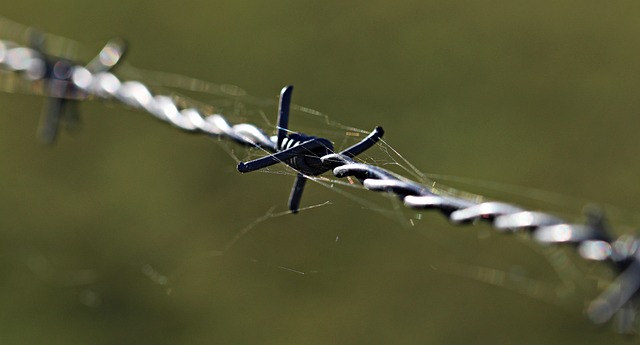Introduction
Elevate the aesthetics and longevity of your wooden fence with professional-grade staining and sealing. This comprehensive guide delves into the essential steps, benefits, and considerations of fence staining and sealing. From understanding the diverse staining options to mastering the preparation process, you’ll learn how to protect your investment against the elements. We’ll walk you through each phase, ensuring your fence not only looks vibrant but also endures for years to come with minimal upkeep.
- Understanding Fence Staining: Benefits and Types
- Preparing Your Wooden Fence for Staining
- The Sealing Process: Protection Against Elements
- Maintenance Tips for Long-Lasting Results
Understanding Fence Staining: Benefits and Types
Fence staining is an effective way to enhance the appearance and protect your wooden fence. It involves applying a pigmented sealer or paint to the surface, offering a range of benefits. Firstly, it can transform an old, faded fence into a striking feature with vibrant colors. Staining also provides protection against the elements, preventing rot, mold, and pest damage. The process creates a durable finish that can last for years with minimal maintenance.
There are various types of fence staining solutions available, catering to different preferences and needs. Water-based stains are popular for their low odor and quick drying time. They offer subtle color enhancements while remaining environmentally friendly. Oil-based stains, on the other hand, provide richer, more vibrant colors and a higher level of protection against UV rays. These options allow you to customize your fence’s look, from natural wood tones to bold, eye-catching shades.
Preparing Your Wooden Fence for Staining
Before applying any stain or sealer, preparing your wooden fence is crucial. Start by cleaning the fence to remove any dirt, dust, and debris. Use a pressure washer or a brush with mild detergent to ensure a thorough clean. This step is essential as it allows the stain to adhere better to the wood.
Next, inspect the fence for any damaged or rot areas. Repair or replace these sections to maintain the structural integrity of your fence. Sanding the surface lightly can also help to create a rough texture that enhances paint and sealer adhesion. Make sure all tools and surfaces are dry before proceeding to the staining process.
The Sealing Process: Protection Against Elements
The sealing process plays a crucial role in extending the lifespan of your wooden fence. After staining, applying a protective sealant is essential to safeguard the wood from the elements. This step involves coating the fence with a specialized product designed to resist water, UV rays, and extreme temperatures, all of which can cause wood to fade, crack, or rot over time.
Sealants create a barrier that not only enhances the visual appeal but also prevents moisture penetration, minimizing the risk of mold, mildew, and other detrimental issues. Regular sealing every 1-2 years is recommended to maintain the fence’s integrity and ensure it remains in top condition for years to come.
Maintenance Tips for Long-Lasting Results
Regular maintenance is key to ensuring your fence staining and sealing project stands the test of time. After initial application, allow the sealer to cure completely before exposing it to harsh weather conditions. This usually means waiting a few days after application before opening windows or doors that might expose the fresh coat to direct sunlight or wind.
To maintain optimal results, regularly inspect your fence for signs of wear and tear. Touch-up stains as needed, focusing on areas that show significant fading or chipping. Clean the fence surface occasionally with a soft brush or cloth to remove dirt, mildew, or mold growth, preventing these from seeping into the wood and causing damage. Remember, consistent care will prolong the life of your fence’s stain and seal, keeping it looking fresh and vibrant for years to come.
